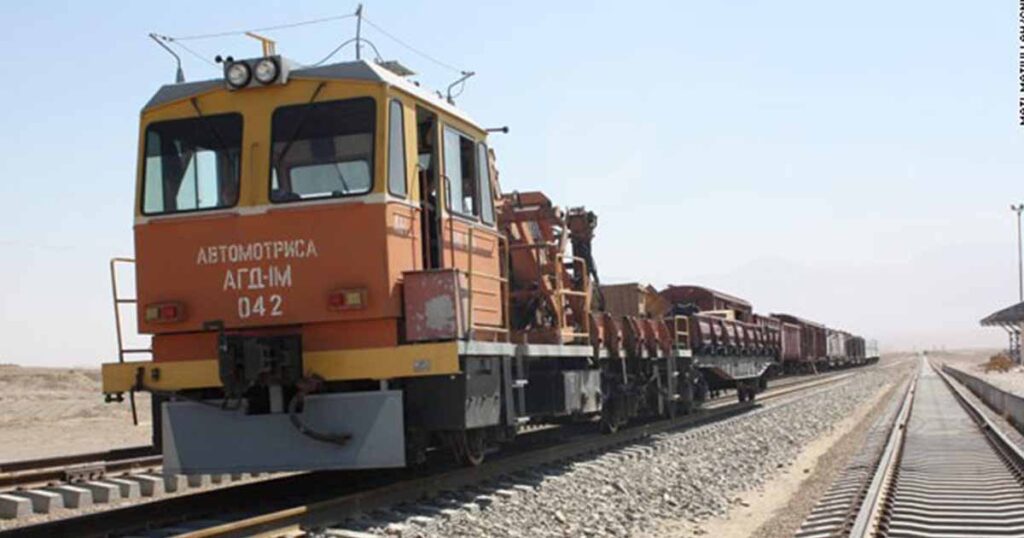The continuous Russia-Ukraine conflict has overturned global calculations about supply routes. Therefore, geo-economic realignments are visible globally, as infrastructure projects previously thought unfeasible are now making progress. In this backdrop, the Uzbekistan-Afghanistan-Pakistan Railway Corridor, also called Trans-Afghan Railway Project, is also gathering momentum. In fact, Uzbekistan has prioritized to diversify its supply routes and increase volumes of Euro-Asian trade by getting access to Pakistan’s seaports of Karachi, Gowadar and Qasim.
Pakistan, Afghanistan and Uzbekistan have already signed in February 2021, a US$ 4.8 billion railway project that is likely to bolster trade relations between Pakistan and South Asia. The proposed rail link with track length of 573-km would run from Termiz in Uzbekistan to Mazar-e Sharif, Kabul, Jalalabad and eventually cross the border to Peshawar in Pakistan. Here, it will be connected to the existing railway network for access to the seaports of Pakistan. Uzbekistan had already built a railway link of 60 km from its Termez city to Afghan city Mazar-e-Sharif. The project is being viewed in Uzbekistan as the “event of the century”, since it is aimed at improved regional trade and connectivity by offering landlocked Central Asia and Afghanistan, a direct access to Pakistan’s Arabian Sea ports. The trilateral project would include both high-speed passenger and cargo trains.
Ever since independence of Central Asian Republics (CARs) in 90s from the erstwhile USSR, Pakistan has been mindful of the significance of intimate relations with the CARs for regional connectivity, trade and commerce. Therefore, a number of initiatives in the form of (a) US$ 1.16 billion CASA-1000 Project for export of surplus hydro electricity from Kyrgyzstan & Tajikistan to Afghanistan and Pakistan (b) US$ 10 billion TAPI natural gas 1814-km pipeline project for gas energy from Turkmenistan to Afghanistan, Pakistan and India (c) Quadrilateral Traffic and Transit Agreement (QTTA) among Pakistan, China, Kyrgyzstan and Kazakhstan providing an effective connectivity network between Central Asia and Gowadar port (d) and Pakistan Stream Gas Pipeline (PSGP) a flagship project of Pak-Russia strategic partnership involving construction of 1122 KM high pressure gas transmission pipeline from Port Qasim, Karachi to Kasur in Punjab province, have been undertaken by Pakistan.
Pakistan-Afghanistan-Uzbekistan Railway project is also a natural sequence of the regional connectivity cherished by Pakistan and Uzbekistan. The 8th Meeting of Trilateral Working Group on Trans-Afghan Railway Project comprising the delegates of Uzbekistan, Afghanistan and Pakistan was held at Ministry of Railway Islamabad on January 05, 2023. The meeting discussed importance of the project; progress made on the initial technical assessments and next steps for the early initiation of the feasibility study.
Once the project is fully functional, huge impact on regional connectivity can be anticipated.
This new railway link would connect Central and South Asia by the shortest route and would open seaports of Pakistan to the Central Asian and Eurasian railway systems to enhance trade flows and strengthen the regional economy. Economists have assessed that the transportation cost of a container from Tashkent to Karachi from this newly proposed railway link could be around US$ 1400-1600 that is half the price of transporting it from Tashkent to Bandar Abbas i.e. US$ 2600-3000. As per another estimate, the delivery time of goods from the Russian border (Ozinki) to Karachi would be reduced to 16-18 days and from Termez to Karachi to 8-10 days only. Railway cargo volume is also expected to reach the planned capacity of 20 million tons per year. A cut in transportation cost is estimated to be from 30-35%.
Taliban have already shown interest to engage regionally, as they have already held talks with Turkmenistan over security of TAPI pipeline. This railway project would ensure continuity of Afghanistan’s gradual integration into regular regional trade and economic system. The project would be instrumental in creating tens of thousands of new jobs in Afghanistan contributing to peace and stability. Uzbek Railway official estimates that 15 million people along the route would find approximately 5 million jobs
Before translating the proposed project into reality, a number of challenges have to be coped with. In Afghanistan, the railway corridor would run through Salang Pass at an altitude of 3500 meters that would include it among the highest railway lines globally. The Salang Pass receives heavy snowfalls and avalanches in winter season that would disable the railway for longer periods. In order to ensure smooth sailing of the project, the alternative Baghlan-Bamiyan route across the mountains could be connected that is often used when the Salang Pass is temporarily closed. Then, the difference of gauges that the three countries use (Uzbekistan, 1520mm, Pakistan 1676mm, Afghanistan 1435mm) is not something to overlook because it can impact transit time efficiency. Reportedly, rail track in Afghanistan would be built with 1520 mm Russian gauge, also being used by Uzbekistan. However, the change of gauge from 1,520 mm to 1,676 mm rail track at the Afghanistan-Pakistan border must be time efficient. The Russian Railways has also agreed to help Uzbekistan conduct the feasibility study and develop a digital model of the railway line using the Russian broad gauge. The source of funding for the project was is not certain, but the financial institutions like World Bank, the Asian Development Bank, the European Bank for Reconstruction and Development, the Islamic Development Bank and the Asian Infrastructure Investment Bank have expressed interest in being involved.
Pakistani seaports are being given priority because Uzbekistan sees Pakistan as more stable partner than its alternatives i.e. Iran with economic sanctions and Turkmenistan with additional border inspections, transit tariffs, costs and delays. The proposed rail line has the potential to shift Uzbekistan’s old status of “landlocked” to “land-linked.”
Besides having the shortest access to warm waters of Pakistan through the Trans-Afghan Railway Corridor, the Kabul Corridor, together with the China-Kyrgyzstan-Uzbekistan transport corridor would link together four economically strong Eurasian regions – Europe, China, Russia and South Asia- via Central Asia. It could be the game changer for the region’s future.


